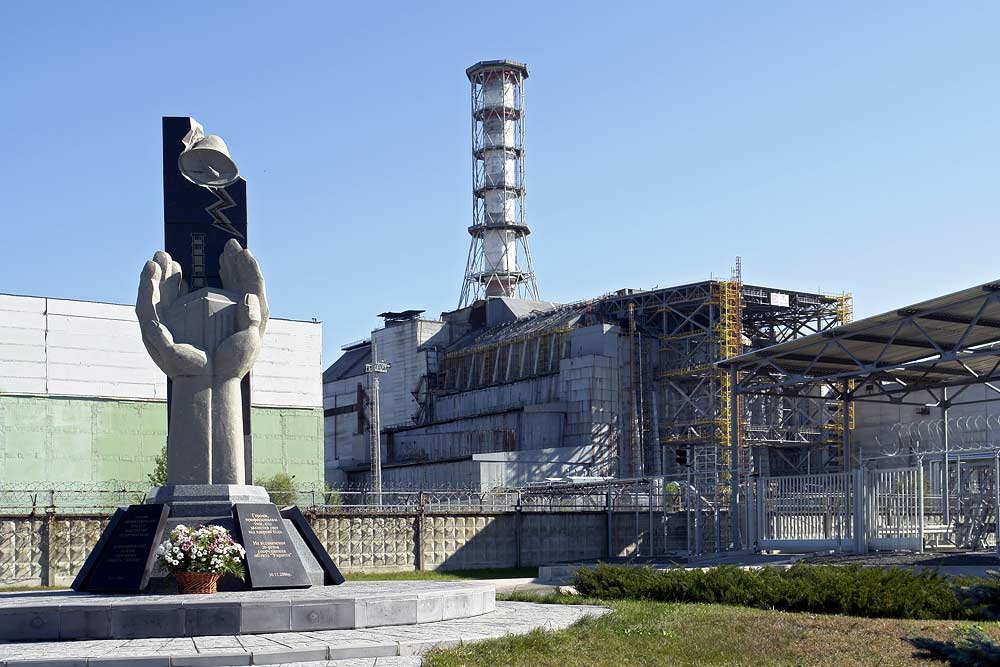
Should you travel to Chornobyl, Ukraine in 2022?

Saturday 26 April 1986 is forever etched into history as a dark day for humanity.
At approximately 01:30am that day, the biggest nuclear power plant accident in human history occurred following an explosion at reactor 4 at the Chornobyl Power Plant in the Soviet Union.
The number of people who would eventually die from the effects of the accident is the subject of debate even today, 35 years later. The Soviets claimed less than 100 deaths at the time but the true number could be over 10,000 if one includes those who died early deaths as a result of the cleanup efforts and whose health was adversely by the radiation in Ukraine, Belarus, Russia and even further afield in Europe.
We will probably never be able to know the true effects of the Chornobyl accident.
Where is Chornobyl?
The Chornobyl Power Plant is today located in northern Ukraine near the border with Belarus and about a 2-hour drive from the capital of Ukraine, Kyiv.
There are two exclusion zones that ring the site of the power plant, a 30-km zone and a 10-km zone with different levels of restrictions.
The site of the power plant is close to the abandoned model Soviet town of Prypyat, which was evacuated in the days following the accident never to be re-inhabited.
The winds in the aftermath of the accident also blew much of the radiation into neighboring Belarus where today there is also an exclusion zone albeit a smaller one than in Ukraine.
Can you visit Chornobyl?
In general, one can enter the exclusion zones surrounding the Chornobyl power plant in Ukraine only on a guided tour by an authorized tour company. They will send your details ahead of time and you will be granted authorization for the visit.
This authorization will allow you to visit the inhabited town of Chornobyl, the abandoned villages of the region, the area of the former Chornobyl Power Plant itself and the abandoned Soviet town of Prypyat, as well as, the many monuments to those who died from the accident.
The power plant’s official name was the ‘Vladimir Ilyich Lenin Nuclear Power Plant’ and today you can even see some of the last statues of Lenin to be found in Ukraine (the Chornobyl exclusion zone is the only part of Ukraine where such statues are legally allowed to remain).
Samosely is the Ukrainian name given to the ‘self-settlers’ of the exclusion zone. These are people who returned to live here in the years following the evacuation. Their numbers have dwindled over time to less than 200 mainly elderly souls today.
The exclusion zone in Belarus is less patrolled but has no major sites to see (unlike in Ukraine). In Belarus, the main radiation fallout zone has been largely depopulated.
Is the Chornobyl Power Plant safe to visit?
35 years after the accident, the power plant no longer produces energy and reactor 4 is covered by a new sarcophagus rolled into place in 2016 which was built to replace the original Soviet sarcophagus over the damaged reactor. This new sarcophagus is expected to last for 100 years.
The radiation levels in most of the exclusion zones are not considered to be harmful. In fact, it is not higher than in many parts of Kyiv. However, in some isolated spots, the radioactivity skyrockets and it is not advised to spend an extended amount of time at these exact spots. You can enjoy the thrill of seeing these radioactive points or objects with a geiger counter on your tour of the exclusion zone.
The buildings of the abandoned Soviet town of Prypyat are dilapidated and are now dangerous to enter. Some are collapsing and this represents a greater immediate danger than radiation poisoning when visiting the region.
All things considered, as long as you are following your guide’s instructions when visiting the exclusion zone, you should avoid any dangers or adverse long term health problems.
Is Prypyat worth visiting nowadays?
I have visited the Chornobyl exclusion zone on 3 occasions, firstly in 2012 then in 2019 and most recently in 2021.
When I first visited in 2012, the town of Prypyat was in a lot better condition than today and I thoroughly enjoyed a time capsule view of a model Soviet town.
The town of Prypyat had a population of roughly 50,000 inhabitants and the standard of living there was extremely high for the Soviet Union. The age demographic was also very young (under 30 years of age).
In 2019 when I returned, I was disappointed to see the level of degradation of Prypyat and how poorly it looks today. Many of the buildings were starting to collapse and it is now considered too dangerous to enter them on the tour. In fact, on my last visit in 2021, I saw some apartment buildings had indeed since collapsed in the town.
This takes away a lot from the experience of visiting the Chornobyl exclusion zone. While I feel that the historical significance of the accident and its aftereffects are certainly important for future generations to remember and to be educated about, I’m no longer convinced that I trip out to the exclusion zone itself has a lot of value for visitors to Ukraine. The Ukrainian National Chornobyl Museum in Kyiv provides a solid alternative to a trip to the accident site itself.
That said, if you are a fan of the HBO series on Chornobyl or a history buff who loves to visit ground zeros of major events or you have a passion for Soviet nostalgia then the tour is definitely worth the investment. There is also a secret Soviet radar complex called Duga that is located in the exclusion zone which is a really interesting stop on the tour.
In conclusion, documenting the Chornobyl exclusion zone has been a valuable endeavor for my own personal interests and the content for my YouTube channel. However, without a compelling reason to the contrary, my third trip to Prypyat is likely to be my last.
I went in 2019 and 2021 with Adventure Tours in Ukraine. Tell them Conor sent you if you decide to go with them! 😃
*Featured image of article is by Mond – Own work, CC BY-SA 3.0, https://commons.wikimedia.org/w/index.php?curid=5443288

FREE Video Course:
5Biggest Dating Mistakes made by Western men in Eastern Europe!
SUCCESS!